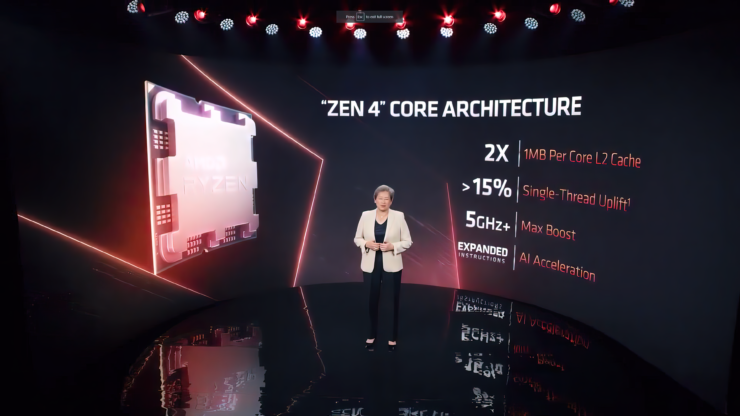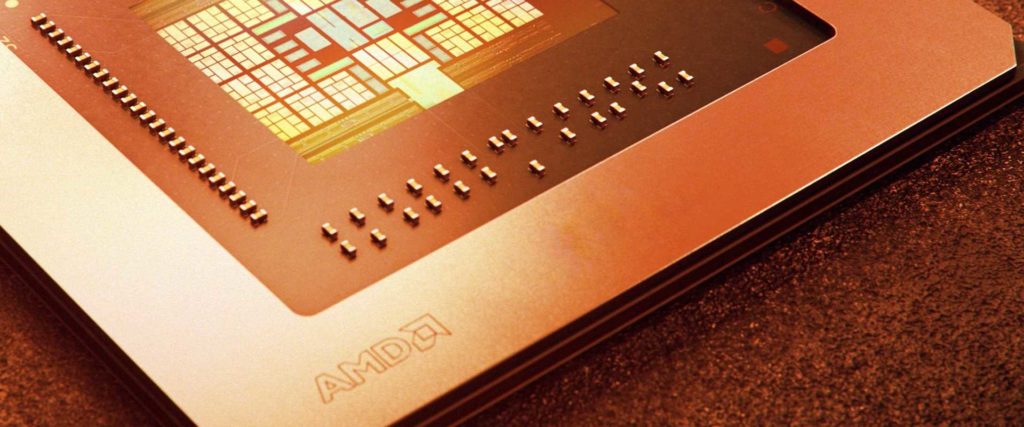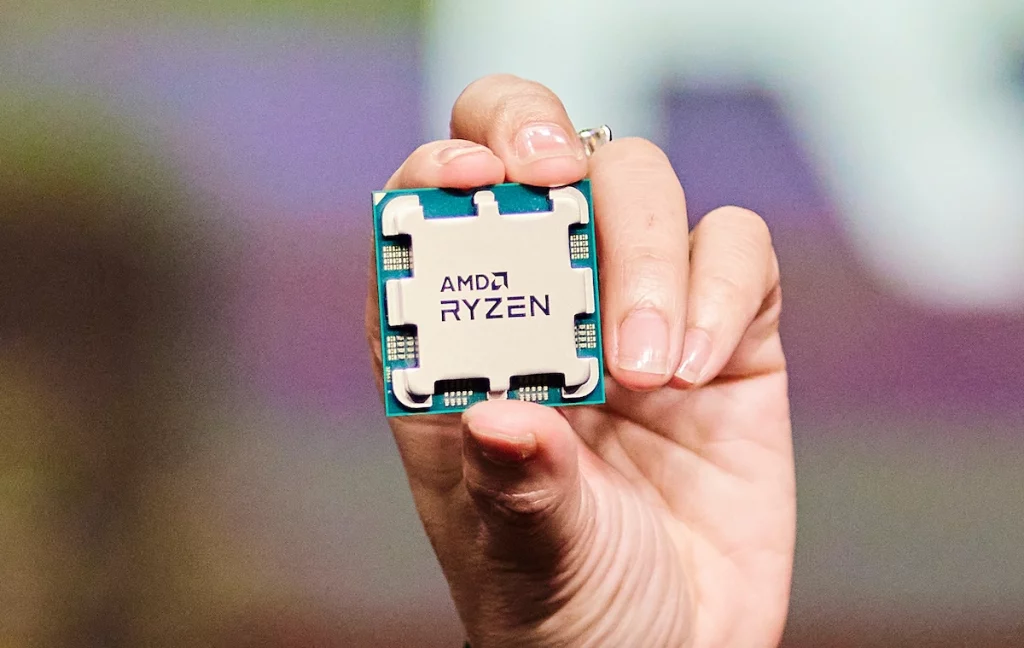This release of AMD’s Zen 4 Ryzen 7000 series “Raphael” CPUs is critical for the company in light of recent developments. In every CPU benchmark, AMD’s previous generation Ryzen 5000 processors did what was previously supposed to be impossible: They dethroned Intel’s top performers. As a result, AMD’s processors earned the top spot on our list of the best CPUs for gaming.
But afterwards, there was Alder Lake. With the launch of its new hybrid x86 architecture, which mixes big, powerful cores with small, effective cores, Intel was able to outperform rivals in terms of raw performance and even mitigate some of its glaring power consumption problems. But perhaps more significantly, Intel’s new bare-knuckle pricing policy, particularly in the mid-range, which is known as “gaming country,” helped Alder Lake start a full-fledged price war.

AMD won’t stand still, though, as its Ryzen 7000 CPUs are prepared to start the race for performance supremacy at full pace. In a gaming demonstration, a 16-core AMD Ryzen 7000 CPU reportedly achieved a staggering 5.5 GHz clock speed and generated Blender visuals in 31% less time than Intel’s top-of-the-line Core i9-12900K.
According to AMD, the final processors will support AVX-512-based AI instructions and be equipped with integrated Radeon RDNA 2 graphics engines that can reach boost rates of up to >5.5 GHz. We have learned a ton of new information from the most recent wave of motherboards with the AM5 socket and the 5nm Zen 4 Ryzen 7000 “Raphael” CPUs. Furthermore, AMD announced at its most recent analyst day that in addition to releasing its standard desktop PC processors this year, it will also be releasing 3D V-Cache versions before the year is through.
AMD Ryzen 7000 Specs
- Codename Raphael
- Up to 16 cores and 32 threads on TSMC 5nm process (N5 used for compute die)
- (up to) >5.5 GHz boost
- 6nm I/O die, DDR5 memory controllers, PCIe 5.0 interface
- DDR5 only (no DDR4 support)
- RDNA 2 integrated GPU (present on IOD)
- Zen 4 architecture has an 8 to 10% IPC gain
- >15% gain in single-threaded work, >35% overall performance gain (multi-threaded workloads), >25% performance-per-watt gains
- AM5 Socket LGA 1718, backward compatible with AM4 coolers
- 600-Series Chipset: X670E Extreme, X670, and B650 Motherboards
- up to 170W TDP, 230W peak power
- up to 125% more memory bandwidth per core
- Support for AVX-512
- 3D V-Cache Zen 4 models will come to market this year
Two 5nm core chiplets, each with eight gold-colored cores, are included on the chip. According to AMD, these are far more closely spaced apart than earlier Ryzen core chiplets and are manufactured utilizing TSMC’s high-performance 5nm process technology (perhaps N5). Between the two core chiplets, a shim that might be employed to keep a flat surface atop the two dies is also visible. Another option is that the two chips are placed close to one another as a result of sophisticated packing.

The new I/O chip, which uses the 6nm manufacturing process, also houses the RDNA 2 graphics engine, a much-needed improvement for AMD. Additionally, it houses the DDR5 and PCIe 5.0 memory controllers. The new 6nm I/O die’s low-power design, which has more advanced low-power management features and a wider range of low-power states, was built using AMD’s Ryzen 6000 CPUs. This chip, which AMD claims now consumes only 20W, which is less than it did with Ryzen 5000, will provide the majority of the power reductions we experience in Ryzen 7000.
AMD explicitly declared this year that the Ryzen 7000 series processors would include 3D V-Cache variants. Outstanding L3 cache capacity will be made possible this year by AMD’s cutting-edge 3D-stacked SRAM technology, which incorporates an L3 chiplet on top of the compute units. With a total of 96MB of L3 cache, the Ryzen 7 5800X3D now offers the best gaming performance in the sector. Although AMD’s 3D V-Cache Ryzen 7000 chips don’t use the term “Raphael-X” officially, they do use the same naming convention as the Milan-X server chips, which employ the same technology.
The Ryzen 7000 CPUs include extra instructions for AI acceleration through their support of AVX-512 instructions such as VNNI for neural networks and BFLOAT16 for inference. Alder and Raptor Lake CPUs from Intel lack AVX-512 capabilities as a result of their hybrid architecture, which oddly puts them at a disadvantage.
At first, AMD asserted that Socket AM5 would be limited to 170W of Package Power Tracking (PPT) power, which meant that this would be the maximum amount of power that any one CPU could draw from the socket at any given moment. Later, AMD claimed that the amount it had initially published was incorrect. Some processors designed for the AM5 socket, including the Ryzen 7000, will have a 170W TDP cap as opposed to the current 105W TDP cap with the Ryzen 5000 CPUs.
Furthermore, the peak power consumption (PPT) of the AM5 socket is 230W. Compared to the Ryzen 5000’s 142W maximum, this is a significant gain. There is a total increase of 65W TDP and 88W PPT over AMD’s current flagships.
According to AMD, the first Zen 4 devices, the Ryzen 7000 series for desktop PCs, will formally launch in Fall 2022. (codenamed Raphael). Because Fall in the US starts on September 22 and concludes on December 22, Ryzen 7000 will be accessible towards the end of the year. The 16-core, 32-thread Ryzen processor from AMD, which is most likely the brand’s flagship chip, has already been showcased. If AMD follows past practice, its most expensive products will probably go on sale first. According to the manufacturer, the Ryzen 7000’s maximum core count at launch is 16 cores and 32 threads.

The Ryzen 7000 CPUs will only be the first stage in the Zen 4 journey as the company completes its CPU plan and introduces the Zen 4 to the desktop and laptop markets. AMD will also use the Zen 4 architecture for its future portfolio of data center CPUs.
also read:
Tesla has laid off more than 200 Employees in its Autopilot Division




